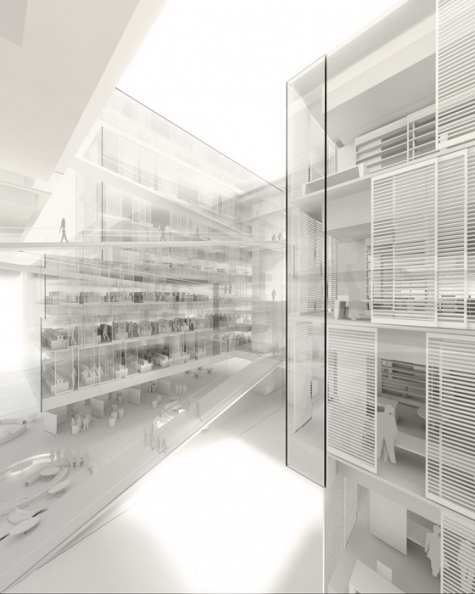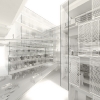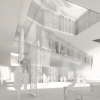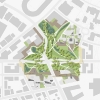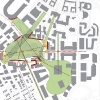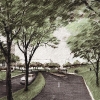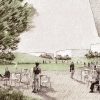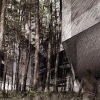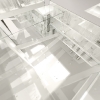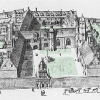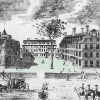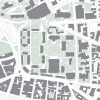Harvard University – Allston Campus and First Science Buildings Invited Competition
Project Description
Beyond individual buildings, programmatic use, or architectural language, this proposal suggests a setting for a new kind of university campus, for new frontiers of intellectual activity and for a community of peers as individually focused as they are collectively entrusted with the resources of Harvard and the larger scientific community. We are proposing Harvard Allston Green. It is a setting that is as urban as it is academic, as civic as it is private and institutional and as natural as it is constructed. Harvard has an opportunity to invest in the making of a democratic and communal space which serves as the foundation for the entire Allston enterprise of renewal, development, building and academic use. The proposal includes laboratory buildings at 500,000 square feet each for Parcels A, B and C.
The building on Parcel A is rooted in the concept of choice and variety. The fundamental challenges of a large research laboratory building are organization of research initiatives, access to views and light and flexibility.
Harvard Yard serves quite literally as the planning precedent for the building proposal for Parcel A. The density and composition of Harvard Yard, the disposition of the buildings and the spaces between them, create a cohesive zone that breathes with light, spaciousness and anticipation. The same can be said for the building proposal for Parcel A. A porous densification, the structure is pierced by vertical courtyards that allow light and air to invade the building mass. The courtyards separate the parts of the building so that each part seems to act individually. From afar the building takes on a visual wholeness. What started as a massing strategy has evolved into individually legible laboratory units, each with the fluid capacity to accommodate varying configurations of offices, laboratories, laboratory backup and support. Initiatives may occupy part of one unit or any number of units, expanding and contracting vertically and horizontally through the strategy of an overlaid circulation system. It is a flexible building organization that allows for organic growth of the initiatives.
Circulation networks intersect and tie together a series of nodes of common space / gathering space for the initiatives or for the public. The public moves through the building in a very particular way with public interfaces scattered vertically and horizontally throughout. The public realm is secure from the research zones but not to the detriment of the public experience.
As with the building proposal for Parcel A, the building proposal for Parcel B is rooted in the concept of variety and choice but with a very different strategy. It employs a large footprint with an articulated perimeter. Deep cuts into the perimeter surface yield extroverted courtyards and increased perimeter surface. Abundant natural light and a visually connected community within the building are among the benefits. The large floorplate provides opportunity for many choices in laboratory, office and support arrangements.
The building proposal for Parcel C is the tallest of the three buildings anchoring the southeast corner of Harvard Allston Green. With displaced floor plates of varying size, the building takes on a rotational quality that helps the complex of buildings transition from an east / west axis to a north / south axis. The varying size floor plates provide many possibilities for laboratory, office and laboratory backup configuration.
